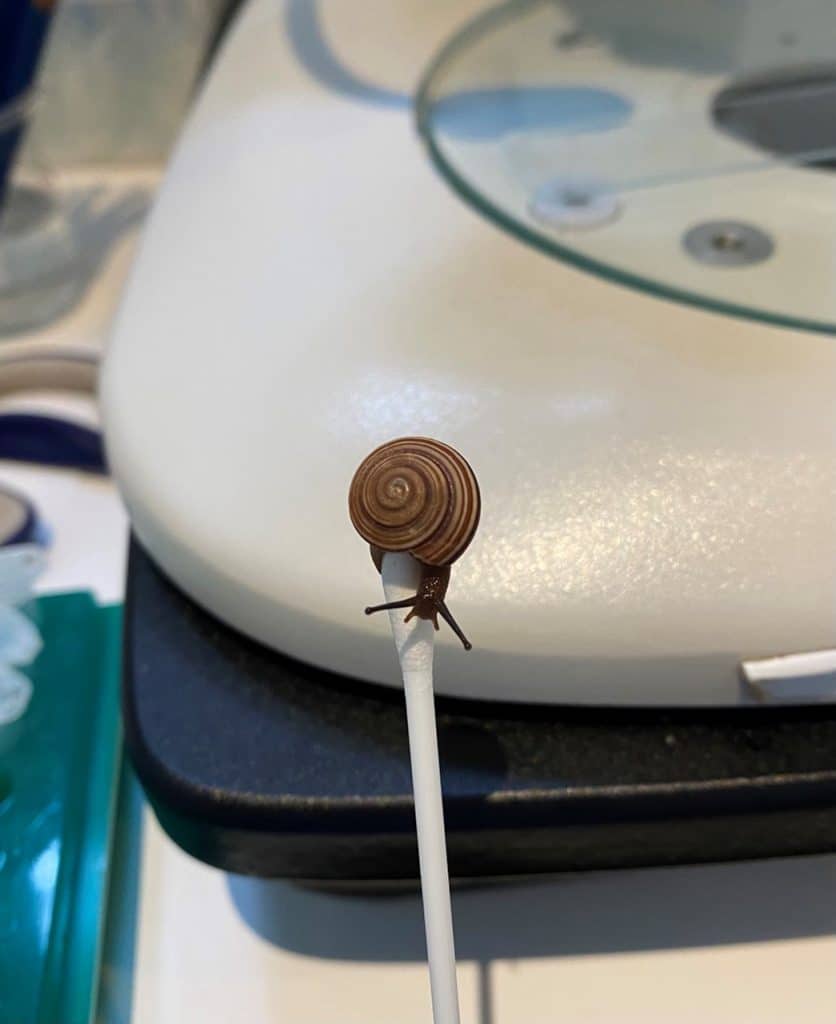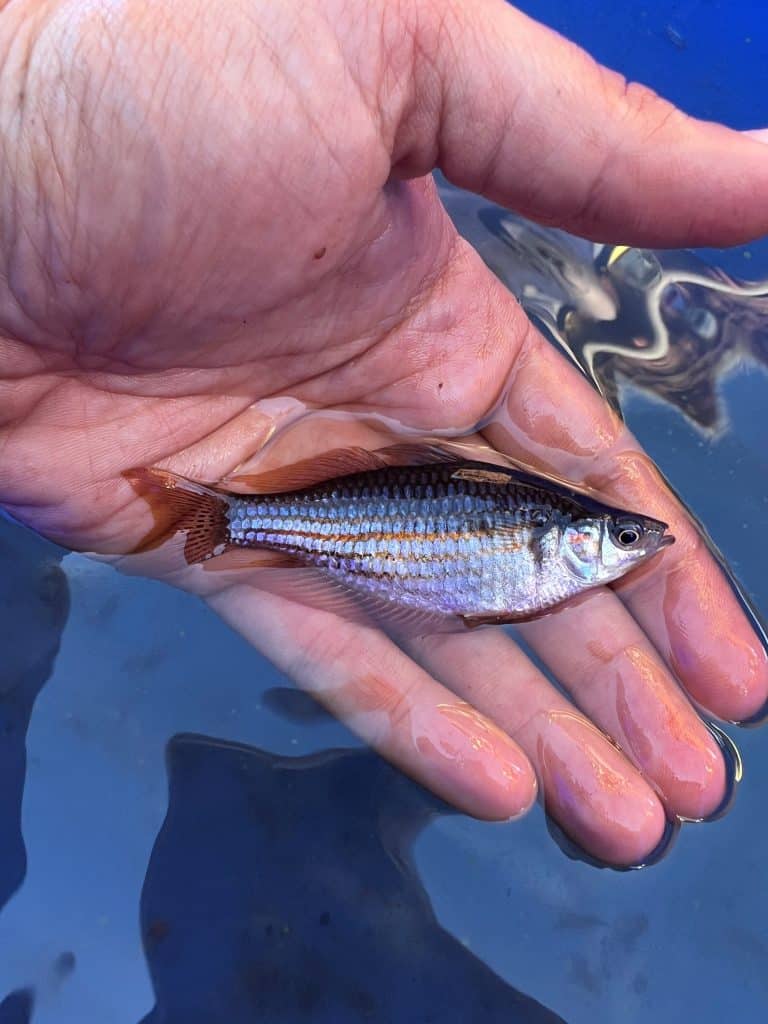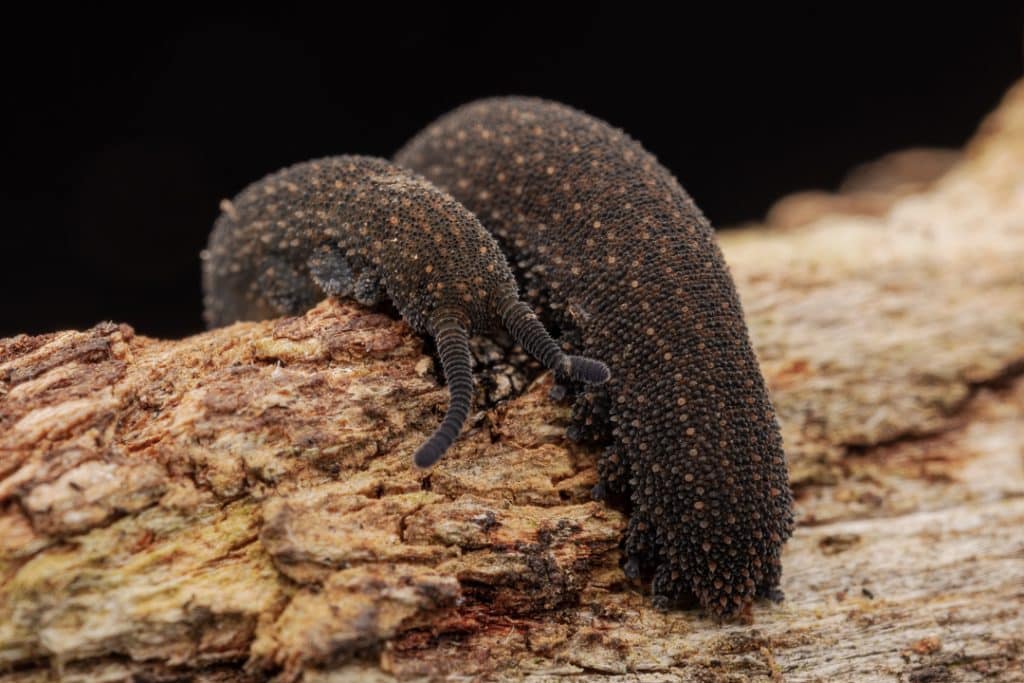Liesel Morgan Land snails often exhibit high levels of endemism and are vulnerable to habitat degradation. As such, they are…
In an occasional series, we ask one of our team members to share a pivotal moment in their career and how this has informed their work at Biologic.
Shae Callan is a Principal Zoologist and Technical Lead of our subterranean fauna team. He became fascinated with invertebrate ecology and biogeographical patterns while studying at university. His early career experiences on a number of large and controversial invertebrate surveys taught him how environmental consultants must contend with the complexity and uncertainty of current scientific knowledge while undertaking environmental impact assessments.
Shae: In the early 2000s there was a huge research effort on subterranean fauna by scientists at the West Australian Museum. This led to the Environmental Protection Authority (EPA) releasing a development guideline that said that environmental impact assessments had to consider the risks to these groups of animals. Subterranean fauna often have restricted distributions in particular geological and hydrogeological settings, which can create a high risk of impacts in some situations. Then there is the related issue that many species have never been collected before and are not described. So it was a kind of new frontier and that intrigued me. I wanted to learn more.
He was asked to join the scientists surveying subterranean fauna as part of the assessments for the Yeelirrie Uranium Project, about 70 km south-west of Wiluna.
Shae: Yeelirrie was my first time out in the arid zone of Australia, and my first time sampling subterranean fauna, so I was on a big learning curve. Subterranean invertebrates are highly adapted to life underground. A lot of them have lost their eyes, they’ve lost their pigment, they’ve grown longer sensory organs. They have adapted – a little bit like deep sea creatures – to an environment without light and with minimal nutrient and oxygen inputs.
Even though the arid landscape of Yeelirrie appeared at first to Shae as ‘flat, unchanging and bereft of water’, the habitats beneath the surface were labyrinthine and filled with life.
Shae: It’s quite a complex system. There’s a paleochannel – an ancient river channel and its associated tributaries that has been filled in by sediments – which forms the deep structure. At the bottom is a deep paleochannel aquifer which tends to be quite salty. And then there are lenses of clays and also ancient river gravels. Each lens differs in permeability, and the patterns of groundwater flow respond to that three-dimensional structure. Then on top of the clay, there’s typically a calcrete deposit, which is basically limestone that has precipitated out of the groundwater and then weathered over time into karst. This forms an interconnected network of caves, fractures and microcavities which are full of stygofauna and troglofauna .
We did a pilot study first. We sampled around 20 sites and we found stygofauna at maybe three or four sites. But even from that fairly small sample we could tell that there was likely more than one community of stygofauna present. We asked the hydrogeologists if they could drill some more bores and holes specifically designed for subterranean fauna sampling and, to their credit, they did. By the end of the survey, we had taken over 1100 samples from 250-odd sites, which was one of the biggest survey efforts for subterranean fauna in the Yilgarn region, if not the state.
Once all of the samples were sorted taxonomically and the data were analysed, the survey team had recorded 55 species of stygofauna and 45 species of troglofauna. Only five of these species were known to be found outside the Yeelirrie area.
Shae: Our results were not entirely unexpected, because we knew that Yeelirrie hadn’t been well-sampled previously. But the complexity of the ecosystems and the number of species they support was a surprise. When we did a regional review of species distributions the number of species we found at Yeelirrie was an order of magnitude higher than anywhere else in the Yilgarn or Murchison regions.
In their assessment of the Yeelirrie Uranium Project, the EPA found that the proposal was unable to meet their environmental objectives for subterranean fauna, with nine species at risk of extinction. They recommended that the mining proposal should not be implemented.
Shae: The EPA has to look at the available evidence and make a call with the information that’s in front of them as to whether a development’s impacts are going to be suitably mitigated by the environmental management being proposed. And in the case of the Yeelirrie assessment, they looked at the available information – the species diversity, the habitat assessment, the repeated survey and the amount of work that had been done – and they decided that the strategies the proponent had put forward were insufficient to mitigate the high level of risk to stygofauna species. We had high confidence that certain species were only found within the impact area, but at the time I felt as if we were having to ‘thread the eye of the needle’ in terms of describing what we could be certain of and what we couldn’t be certain of. Not just the complexity of what we were documenting but also all the things that we didn’t know. It was a challenge to provide all of the essential context and the key facts and data that feeds into such an important decision.
Despite being approved by both the Western Australian and federal environment ministers several years after the EPA decision, the Yeelirrie uranium mine was not developed following a decade of community opposition, court challenges and changing market conditions. The environmental approval given by the Western Australian government has subsequently lapsed. Yet the professional and public scrutiny given to the subterranean fauna survey at Yeelirrie has been pivotal to informing the innovative approaches that Shae brings to his role as Subterranean Fauna Technical Lead at Biologic.
Shae: As subterranean fauna consultants, we’re always looking to attack uncertainty and resolve it by whatever means possible. In the time of the Yeelirrie surveys we didn’t have 3D habitat modelling. We didn’t have the ability to assess environmental variables with ‘down-hole’ groundwater profile logging. We didn’t have an extensive database of regional DNA sequences across all of these different taxonomic groups that we could rely on to assess regional species distributions. Subterranean fauna science keeps advancing over time, and we keep finding new ways to attack that uncertainty.
I guess the amount of effort and time and stress that was involved in getting the Yeelirrie project across the line has shown me the way to do it better: the innovation, the level of information and the collaboration needed. I bring this to my role at Biologic in terms of the way we try and deal with these complex problems. And that certainly seems to be appreciated across our client base and by the regulators.
Shae has written about his experiences with the subterranean fauna at Yeelirrie as a contributor to “Yeelirrie: 50 Years of Resistance” published by The Conservation Council of Western Australia (2023).



